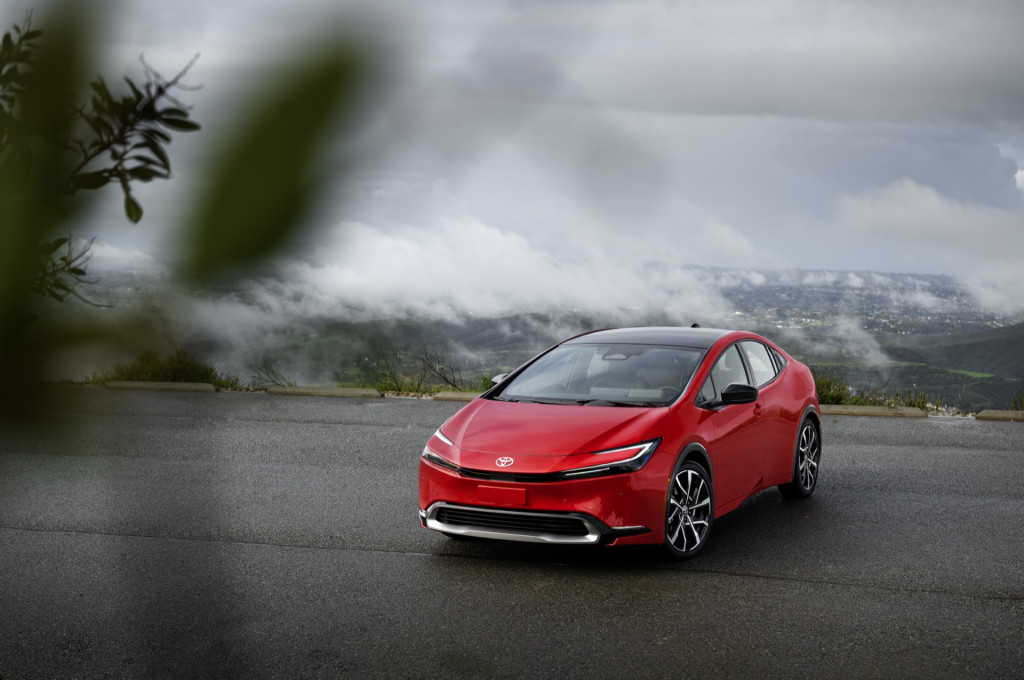[ad_1]
The U.S. Department of Energy (DOE) unveiled a revised rule that would effectively give automakers more flexibility with pending EPA rules for model years 2027 to 2032—and more time to ramp up EV sales compared to an earlier proposal.
The final rule for Petroleum-Equivalent Fuel Economy Calculation released late Tuesday softens what had been rolled out by the Biden administration as part of the tougher framework—by adding three years to the phase-in of the new rule, and effectively cutting the PEF over that time by 65%, versus the previously proposed 72% by 2027.
The EPA has been clear in emphasizing that EVs weren’t mandated by its upcoming rules, which were announced last year. At that time, the agency estimated that the fleet emissions targets would bring 67% EV sales by 2032 in their originally proposed form.
The issue with the rules, voiced by many environmental groups, and even supported by some automakers, had effectively been that automakers were able to factor EVs into their new-vehicle fleet at a disproportionate benefit

2023 Toyota Prius Prime
This change, which some would consider to be a clever workaround by automakers to skirt the rules, now enabled by the DOE, has been rumored and expected for weeks if not months. The New York Times reported in February that the Biden administration was considering a slower EV rollout.
The reevaluation is likely due in part to complaints from automakers. There was widespread support for the rules in the time leading up to their announcement last year, but more hesitance since then, notably from General Motors, which said in July of last year that it had issues with the EV sales targets implied by the proposed rules.
As Environmental Defense Fund (EDF) notes, though, full-year 2023 EV sales were 50% higher than 2022. More than 1.4 million EVs were sold in the U.S. in 2023, and they represented 9.1% of new-car sales, exceeding many projections, EDF noted. Bloomberg New Energy Finance (BNEF) is now estimating that EVs will reach 28% of U.S. new-car sales by 2026.
Automakers may now be able to meet emissions targets with larger numbers of plug-in hybrids, according to the report. Sources told Reuters that automakers could comply by having more than one third of the vehicles they produce be plug-in hybrids by 2032.

2026 Cadillac Vistiq
“Although the Department has not changed the PEF value for over 23 years, DOE has statutory authority to review the PEF value on an annual basis,” reminded the DOE.
The EPA will also reportedly scale back proposed regulations for particulate emissions from gasoline vehicles at the behest of automakers, which have argued that the proposed rules would require particulate filters on nearly all gasoline vehicles. Such filters are already effectively mandatory on light-duty diesel vehicles, and are already in widespread use on gasoline vehicles in Europe.
The original proposed emissions rules would, cumulatively, reduce fine particulate emissions by approximately 246,000 tons, and nitrogen oxides by more than one million tons by 2055, EDF estimates. That could help prevent more than 32,000 premature deaths, avoid nearly 45,000 hospital and emergency room visits, prevent more than 16 million asthma attacks, and avoid an estimated six million lost work and school days by 2055, the organization estimates.
—
with reporting by Bengt Halvorson
[ad_2]
Source link




